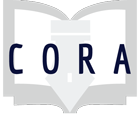Short Description:
About: You are the Chief Executive Officer of an exciting start up Clean Energy Business. This is a web-based free simulation. Students play the role of the founder of a new start-up company in the exciting and competitive clean tech sector. Each quarter students must set prices, decide how many engineers and sales people to hire, and set compensation, including salary, stock, options and profit sharing. Students must also make financial decisions such as debt level, equity level and overall cash management.
Challenge: Will you lead your company to record profits or run your firm into bankruptcy?
Requirements: This is a several part project, which includes: at least 4 attempts at the simulation, 1 annual report assignment, 4 project quizzes, 2 blog posting , and 1 feedback survey. Note to receive full credit students must successfully complete 10 years of profitable simulation business (remember you can play as many times as you wish, however for full credit you must have played at least 4 times). Bonus points will be added to students who make the final leader board, based upon highest cumulative net profits. Students work independently, not part of a group, however students are encouraged to use blog space to discuss various game strategies.
When playing the simulation, select "play as a class." Your ID is your Wake Tech email address and your password is 4444. Please wait until week 2 of the class to start the simulation in order for the instructor to enter the class emails into the game site. Instruction Video (opens in a new window) Link to Play Simulation (opens in new window)
Play the game as often as you wish; play often throughout the semester to try different strategies and improve your scores.
Semester champion: the student the with highest cumulative net income will be declared the semester champion. We will periodically update students with a leader board in an announcement so you can see where you stand relative to other students.
Learning Outcomes:
Learning Outcomes: Experience the challenge of building a startup company in a demanding competitive environment, including financial, human resources, strategic and other decisions.
Course Context (e.g. how it was implemented or integrated):
A project has been use in one or more Introduction to Business Class since 2015.
Additional Instructor Resources (e.g. in-class activities, worksheets, scaffolding applications, supplemental modules, further readings, etc.):
In class: Demo of playing the simulation.
Scaffolding Used:
W3: Quiz on Game Instructions Video (10%)
W4: Student blog on their experience with first game attempt (10%)
W5: Quiz on pricing, compensation, financing strategies (10%)
W6: Student blog on useful SBA resources (10%)
W7: Quiz on Hint Videos: Top 5 reasons small businesses fail. (10%)
W8: Quiz on grading rubic (10%)
W12: Annual Report (40%)
Potential Pitfalls and Teaching Tips:
This project is very labor intensive for the instructor to keep up with weekly leader boards, however it is also provides many opportunities for rich discussion with students, and student feedback on the game has been very positive.

